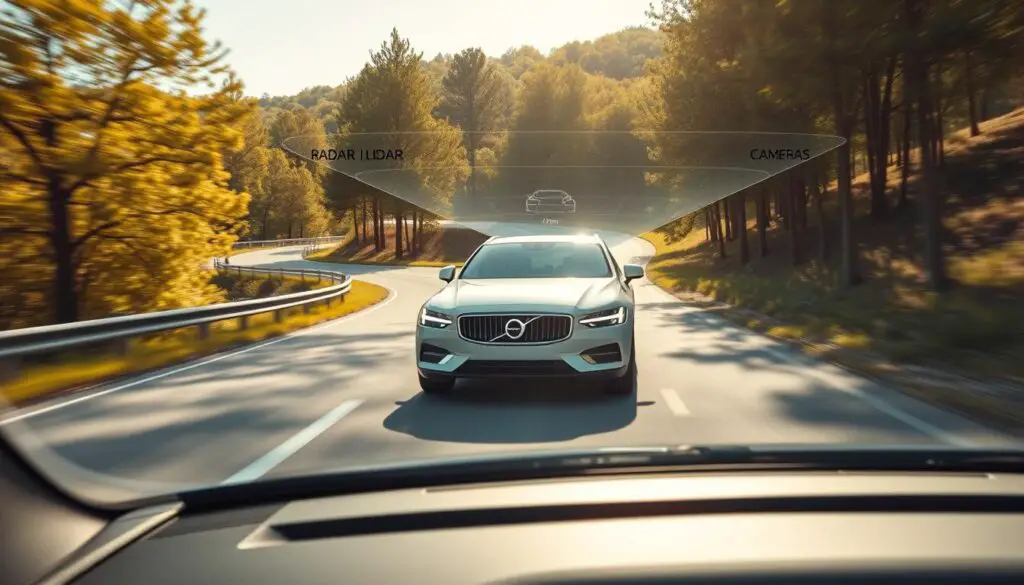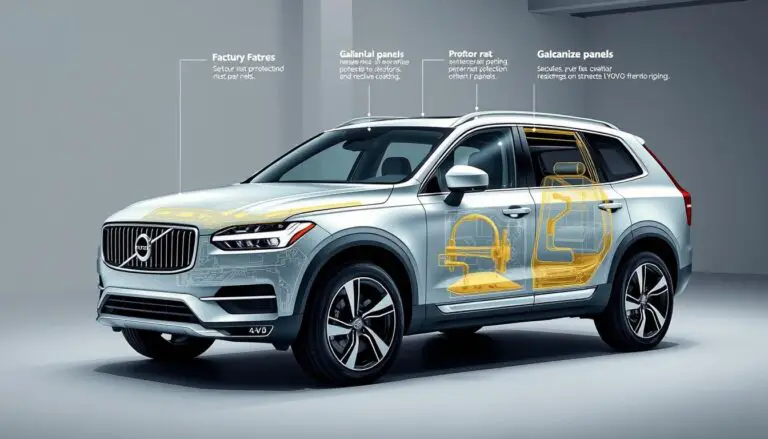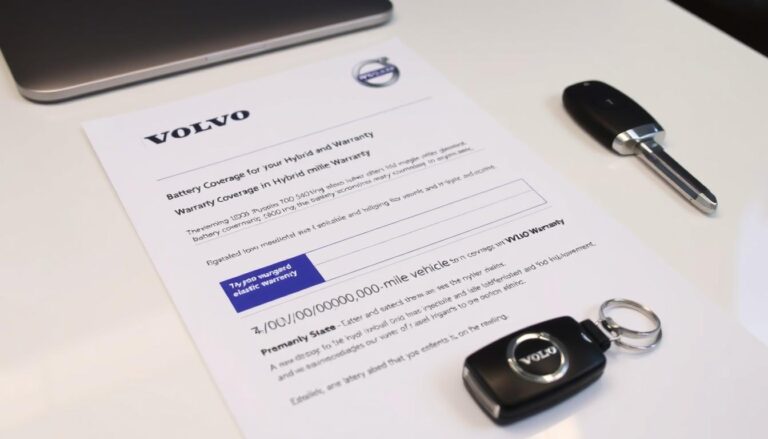Volvo Active Driver Assist is a forward-looking collision mitigation system that blends camera and radar inputs to help drivers adapt to changing traffic. It issues timely alerts and can reduce throttle, engage the engine brake, and apply service brakes when needed to lessen or avoid a collision.
The integrated camera radar sensors continuously scan the road scene to spot motorized vehicles nearby. Raw sensor information becomes clear, actionable alerts that improve situational awareness in dynamic traffic.
Originating from the Bendix Wingman Fusion platform, this capability evolved into VADA 2.0 to offer enhanced alerts, safe following distance support, and stronger emergency braking. It sits within a safety-first approach for trucks in North America.
This technology supports professional drivers and other motorists by delivering predictable responses to sudden traffic changes. It complements training and prudent decision-making, while the human operator remains responsible for safe operation at all times.
Key Takeaways
- Combines camera and radar to detect vehicles and deliver timely safety alerts.
- Can reduce throttle, engage engine brake, and apply service brakes to mitigate collisions.
- Built from Bendix Wingman Fusion roots and advanced as VADA 2.0 for better tracking.
- Designed to support—not replace—the driver; safe operation remains the driver’s duty.
- Improves safety margins and consistency of responses in changing traffic.
What Volvo’s Active Driver Assist Means for Safety and Driver Experience
Modern truck safety blends camera imaging and radar range data to give drivers real-time collision context. The result is a practical, layered view of traffic that improves awareness across light and weather conditions.
How camera and radar work together for collision mitigation
The camera radar sensors classify vehicles while radar measures distance and relative speed. This combined feed creates a comprehensive collision mitigation picture that stays reliable at dusk, rain, or glare.
From alerts to braking: how the system intervenes in changing traffic
In normal operation, the system issues timely visual and audible alerts to help drivers keep a safe following distance. Alerts are designed to inform without being intrusive.
When risk rises, the sequence moves from warnings to foundation braking: cruise disengages, throttle reduces, engine brake engages, and service brakes apply as needed. VADA 2.0 includes Automatic Emergency Braking as a last line of defense when a collision is imminent and the driver does not respond.
- Lane departure warning notifies unintentional lane exits and offers adjustable audio with a mute override.
- Departure warning logic pairs alerts with subsequent assistance if no corrective action occurs.
- These features support professional drivers across models in Trucks North America by providing consistent, predictable behavior that enhances safety without encouraging overreliance.
| Feature | Primary Function | Driver Benefit |
|---|---|---|
| Camera classification | Identifies vehicle types | Better target recognition in varied light |
| Radar range sensing | Measures distance & speed | Reliable detection in poor visibility |
| VADA 2.0 AEB | Automatic Emergency Braking | Reduces impact severity as last-resort |
| Lane Departure Warning | Alerts and mute override | Supports lane discipline and comfort |
Volvo Active Driver Assist 2.0 becomes standard on new Volvo VNR and VNL models
Making VADA 2.0 standard marks a step change in how new heavy‑duty models ship with collision mitigation. VADA 2.0 is now standard equipment on new Volvo VNR and VNL models in the United States and is offered on the VNX series. This expands access to comprehensive collision mitigation across the lineup.

Availability across the VNR, VNL, and VNX series
Across these series, the same core system features—lane and departure warning, camera‑radar fusion, and mitigation logic—are integrated for a unified experience. Rollout began in Q3 2019 with enhancements through late 2020, showing sustained investment in performance and reliability for fleets and drivers.
Built on Bendix Wingman Fusion
The system’s foundation is a long‑standing partnership with Bendix Wingman Fusion. First launched in 2017, this platform evolved into VADA 2.0 and powers the collision mitigation system that now ships as standard. Volvo Trucks North America positioned this move as industry leadership in heavy‑duty safety.
Why standardization matters
- Fleets: consistent training, simplified maintenance, and predictable system behavior.
- Drivers and motorists: broader access to lane support and mitigation that can reduce crash frequency and severity.
- Operators: uniform systems across models help enforce safety policies and improve uptime.
For more on the program launch and timeline, see the Volvo Active Driver Assist announcement.
Key features, improvements, and what’s next for active driver assist
This section breaks down the key features, recent improvements, and the roadmap shaping next‑gen driver assist functionality.

Automatic Emergency Braking with multi-lane capability
Automatic Emergency Braking (AEB) uses integrated camera and radar to monitor surrounding traffic. It now operates across multiple lanes to better protect against sudden cut‑ins and abrupt stops.
Lane Departure Warning with adjustable audio and mute override
Lane departure warning offers adjustable audio volume and a temporary mute override. Drivers can silence specific alerts for about ten minutes when needed, maintaining focus without losing safety coverage.
Highway Departure Warning and Braking
If a departure risk persists after an LDW, Highway Departure Warning and Braking will slow the vehicle by a predefined MPH. This measured braking reduces severity when a truck might leave the drivable roadway.
Adaptive Cruise Control with Cruise Auto Resume (Slow & Go)
Adaptive cruise control includes Cruise Auto Resume so the truck resumes set speed above 10 mph after brief slowdowns. This improves comfort in rolling traffic while keeping safe gaps.
Driver Awareness Support and future updates
Driver Awareness Support uses a windshield‑mounted in‑cab camera to capture data for coaching and safety programs. Future updates include Traffic Stop & Driver Go, Lane Change Support with audio tuning, and standalone data capture options.
| Feature | Primary Benefit | How it helps drivers |
|---|---|---|
| AEB multi‑lane | Broader collision coverage | Better response to cut‑ins |
| LDW with audio control | Custom alert volume | Reduces nuisance while keeping warnings |
| HDB | Slows before roadway departure | Lowers impact risk |
| ACC + Cruise Auto Resume | Smoother slow‑traffic driving | Maintains set speed and gap |
Together these features form a comprehensive collision mitigation system that uses camera radar sensors to support professional drivers. VADA 2.0 and driver assist 2.0 improve safety and consistency across models, but the technology supplements—not replaces—attentive operation.
Conclusion
VADA 2.0 is now standard on new VNR and VNL models and available on VNX, bringing a mature collision mitigation system to more trucks in the U.S. market.
The integrated suite—AEB, lane departure warnings, Highway Departure Braking, ACC with Cruise Auto Resume, and Driver Awareness Support—delivers timely alerts and measured interventions that help drivers manage following distance and changing traffic.
Built on Bendix Wingman Fusion, the platform shows steady improvement from software updates and planned features like Traffic Stop & Driver Go and Lane Change Support. For fleets, standardization simplifies training and policy enforcement.
Bottom line: adopting a modern active driver assist system is a pragmatic, data-driven way to reduce collision risk and support professional drivers in real-world operations.
FAQ
What does the system do to improve safety and driver experience?
The technology uses combined camera and radar sensors to scan the road, detect vehicles, pedestrians and lane markings, and provide timely warnings. When a collision risk appears, it escalates from visual and audible alerts to controlled braking to mitigate or avoid impact. This layered approach reduces reaction time and helps drivers manage complex traffic situations with greater confidence.
How do camera and radar work together for collision mitigation?
The camera reads lane lines, signs and object shapes while radar measures distance and relative speed. Fusing these inputs creates a reliable picture of the environment, enabling the system to track targets through poor light, bad weather or cluttered traffic. This redundancy improves detection accuracy and supports automated interventions like emergency braking.
How does the system move from alerts to active braking in changing traffic?
First, the system delivers graduated alerts—visual and audio—prompting the driver to act. If the driver doesn’t respond and a severe risk remains, the system applies controlled braking to slow the vehicle and reduce collision severity. This staged logic preserves driver authority while providing last‑resort protection.
Which truck models include this technology as standard in the United States?
The capability is now standard on the VNR and VNL model lines, with availability across the VNX series depending on specification and build. Fleet managers should check model year and trim to confirm inclusions for specific vehicles.
What role does the Bendix Wingman Fusion partnership play?
The solution is built on the Bendix Wingman Fusion platform, combining proven collision‑mitigation algorithms and sensor fusion expertise with truckmaker vehicle controls. This collaboration accelerates integration, validation and ongoing feature development for heavy‑duty applications.
Why does making the system standard matter for fleets and other road users?
Standardization ensures consistent baseline safety across new trucks, simplifies spec’ing for fleets, reduces retrofit complexity, and raises safety expectations for all motorists. It also helps drivers adapt faster when systems behave predictably across different vehicles.
What is Automatic Emergency Braking with multi-lane capability?
This feature detects imminent collisions in the vehicle’s travel path and applies strong, controlled braking. Multi‑lane capability extends detection to adjacent lanes when a rapid lane change or obstacle requires intervention, helping prevent side impacts and mitigated lane‑change collisions.
How does Lane Departure Warning work, and can the audio be adjusted?
Lane Departure Warning monitors lane markings and alerts the driver if the vehicle drifts without signaling. The system offers adjustable audio levels and a mute override so fleets and drivers can tailor alerts to cab noise and driver preference while maintaining safety effectiveness.
What protections exist for roadway departure scenarios?
Highway Departure Warning and Braking identify when the truck is leaving the roadway or crossing paved edges. The system warns the driver first and, if needed, applies braking to reduce speed and help regain control, lowering the risk of rollovers and run‑off incidents.
How does Adaptive Cruise Control with Cruise Auto Resume work in slow traffic?
Adaptive Cruise Control maintains set following distance by adjusting speed relative to lead vehicles. The Cruise Auto Resume (Slow & Go) function automatically restarts cruising after a short stop without driver input, easing congestion driving and reducing fatigue.
What is Driver Awareness Support and how is data used for coaching?
Driver Awareness Support monitors driver inputs and system interactions to detect lapses or signs of reduced attention. Collected events and performance data can be exported for coaching and training programs, helping fleets improve safety culture and driver behavior.
What future updates are planned, such as Traffic Stop & Driver Go and Lane Change Support?
Roadmap items include Traffic Stop & Driver Go to manage stop‑and‑go scenarios more smoothly and Lane Change Support to assist safe lateral moves. These updates aim to expand automation capabilities while keeping drivers engaged and informed.
How reliable are camera and radar sensors in adverse weather or lighting?
Sensor fusion improves overall reliability: radar performs well in rain, fog and low light, while cameras provide high‑resolution object classification in good conditions. Together they reduce single‑sensor limitations, but drivers must remain alert and aware when visibility is severely reduced.
Does the system require special maintenance or calibration?
Regular vehicle maintenance preserves sensor performance. Periodic calibration after repairs, windshield replacement, or sensor alignment changes is recommended. Following service schedules and using authorized technicians ensures sensors remain accurate and compliant.
How does this system compare to other collision mitigation offerings like Bendix Wingman Fusion alone?
This integrated solution combines the platform capabilities of Bendix Wingman Fusion with vehicle‑specific control, tuning and user interface. The result is harmonized performance that leverages proven algorithms while adapting to heavy‑duty truck dynamics and OEM safety standards.



